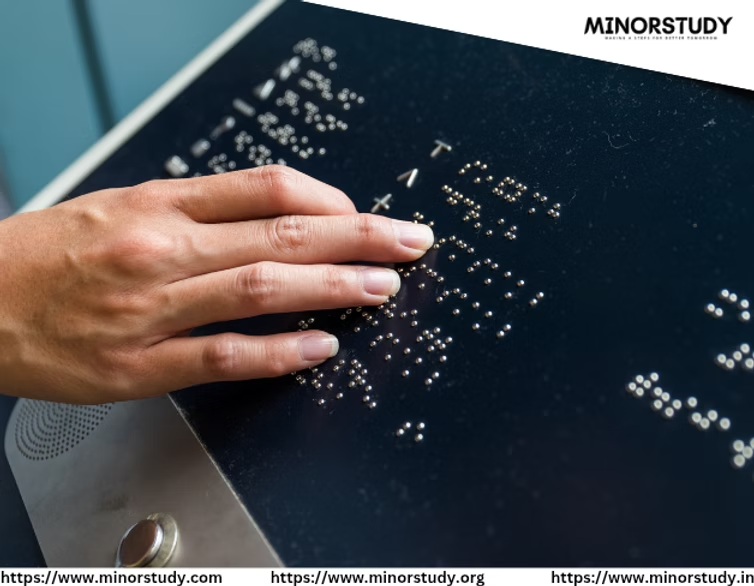🧠 9 Inspiring Facts That Make World Braille Day 2025 a Symbol of Hope and Human Dignity
In a world where visual information dominates our lives, World Braille Day stands as a powerful reminder that inclusion begins with accessibility. Celebrated every year on January 4, this day honors the birth of Louis Braille, the brilliant mind behind the tactile writing system that has empowered millions of blind and visually impaired individuals to read, write, and live independently.
- 📜 History of World Braille Day
- 📊 9 Inspiring Facts About Braille and Accessibility
- 📆 Timeline: Key Moments in the History of Braille and Accessibility
- 🌟 Significance of World Braille Day
- 📖 1. Literacy is Freedom
- 🤝 2. Promoting Inclusion
- 🌐 3. Bridging the Digital Divide
- 🏥 4. Access to Healthcare and Information
- 🎉 How the World Observes Braille Day
- 💌 Wishing Messages for World Braille Day
- ❓ Frequently Asked Questions (FAQs)
- ❓ What is World Braille Day?
- ❓ Why is Braille important today?
- ❓ Is Braille still relevant in the digital age?
- ❓ Can anyone learn Braille?
- ❓ How can schools celebrate World Braille Day?
- 💡 Importance in Our Lives and Society
- 📌 Key Takeaways
- 🔚 Conclusion: Touching Words, Transforming Lives
In this detailed article, we’ll explore the history, facts, timeline, significance, FAQs, observance, wishes, and the life-changing impact of Braille literacy. With over 1200+ words, this human-centered narrative aims to bridge awareness with empathy and action.
📜 History of World Braille Day
World Braille Day was officially recognized by the United Nations in 2018 and is observed annually on January 4, commemorating the birth anniversary of Louis Braille (1809–1852).
Louis Braille, who lost his eyesight due to an accident at the age of three, developed the Braille system at the young age of 15. His innovative six-dot code revolutionized how blind individuals interacted with the world—from basic literacy to advanced scientific notation.
World Braille Day was created to:
Promote awareness of the Braille system
Advocate for access to written language for all
Highlight issues of inaccessibility in modern communication
Push for inclusive education and information sharing
📊 9 Inspiring Facts About Braille and Accessibility
🧩 Braille is not a language—it’s a tactile writing system that can be applied to any language.
🌍 Over 40 million blind people worldwide rely on Braille as a key to literacy and independence.
🏫 The first Braille school was opened in Paris in 1829—the Royal Institute for Blind Youth.
📚 Modern Braille has adaptations for math, science, music, and even computer programming.
📖 Braille books are typically much larger due to spacing needs; a single novel may require several volumes.
📱 There are now refreshable Braille displays and Braille-compatible smartphones.
⚖️ The UN Convention on the Rights of Persons with Disabilities (CRPD) emphasizes access to Braille as a human right.
🏛️ Many public buildings still lack Braille signage, highlighting ongoing accessibility gaps.
🧠 Reading Braille activates the same brain areas as visual reading, according to neuroscientific research.
📆 Timeline: Key Moments in the History of Braille and Accessibility
| Year | Event |
|---|---|
| 1809 | Louis Braille is born in Coupvray, France. |
| 1824 | At age 15, Louis Braille invents the Braille system. |
| 1829 | First Braille book published: Method of Writing Words, Music, and Plain Songs. |
| 1852 | Louis Braille dies; his system still not fully accepted in his lifetime. |
| 1916 | Braille gains wider acceptance in the U.S. |
| 1965 | First Braille typewriter (Perkins Brailler) introduced. |
| 2018 | UN officially declares January 4 as World Braille Day. |
| 2025 | Theme focuses on “Digital Inclusion through Braille Innovation”. |
🌟 Significance of World Braille Day
📖 1. Literacy is Freedom
For the visually impaired, Braille is the gateway to knowledge, enabling independence in education, employment, and social participation.
🤝 2. Promoting Inclusion
This day serves as a call to governments, corporations, and communities to ensure accessible environments—in schools, transport, websites, and public spaces.
🌐 3. Bridging the Digital Divide
While digital tools flourish, many apps, e-books, and websites remain unreadable to blind users. Braille-compatible tech is essential to equal digital participation.
🏥 4. Access to Healthcare and Information
In the age of information, especially during public health crises (like COVID-19), accessible communication in Braille can be life-saving.
🎉 How the World Observes Braille Day
🏛️ Institutional Recognition
Seminars by UNESCO, WHO, and disability rights groups
Accessibility audits in schools, banks, and hospitals
Campaigns to include Braille on medicine packaging and voting ballots
📚 Community & NGO Involvement
Free Braille classes and workshops
Donation drives for Braille books and devices
Inclusive art and poetry competitions with Braille entries
🌍 At the Individual Level
Learning to write a name or message in Braille
Sharing stories or quotes of inspiring blind individuals
Posting on social media using #WorldBrailleDay #BrailleEmpowers
💌 Wishing Messages for World Braille Day
Here are thoughtful wishes you can share to spread awareness:
“On World Braille Day, let’s pledge to make literacy touchable for everyone.”
“Braille isn’t just dots—it’s dignity. Happy World Braille Day!”
“Accessibility begins where empathy resides. Wishing you a meaningful Braille Day 2025.”
“Celebrate the code that turns darkness into knowledge. Happy World Braille Day!”
“May we all see the world better—not with eyes, but with compassion.”
❓ Frequently Asked Questions (FAQs)
❓ What is World Braille Day?
It’s a global observance held every January 4, honoring Louis Braille and promoting Braille literacy and accessibility.
❓ Why is Braille important today?
It ensures that blind and visually impaired individuals have equal access to education, employment, and information.
❓ Is Braille still relevant in the digital age?
Yes! Refreshable Braille displays, screen readers, and Braille-compatible software are crucial for digital inclusion.
❓ Can anyone learn Braille?
Absolutely. While designed for the blind, sighted individuals—including teachers and family members—are encouraged to learn Braille too.
❓ How can schools celebrate World Braille Day?
Through:
Interactive Braille writing workshops
Blindfold challenges to promote empathy
Talks from visually impaired professionals or students
💡 Importance in Our Lives and Society
👩🎓 Education
Braille ensures that blind students aren’t left behind. From math and chemistry to music and literature, it allows equal participation in all academic areas.
👨💼 Employment
Access to Braille materials and technology means visually impaired people can pursue meaningful careers in law, education, science, and beyond.
👨👩👧👦 Family Life
When families learn Braille together, it strengthens emotional bonds and promotes inclusive communication.
🏛️ Social Justice
World Braille Day advocates for a world that doesn’t just see disability, but enables ability through thoughtful design and policy.
📌 Key Takeaways
World Braille Day is celebrated on January 4, Louis Braille’s birthday.
Braille was developed at age 15 and continues to change lives globally.
Braille is not outdated—it’s adapting to the digital era through tech and advocacy.
The day is observed with awareness campaigns, tech workshops, and inclusive activities.
It serves as a reminder that dignity, literacy, and access are basic rights.
🔚 Conclusion: Touching Words, Transforming Lives
World Braille Day is not just about honoring dots on paper—it’s about recognizing humanity in every dot, every letter, and every effort to make the world inclusive. When a child runs their fingers across a Braille page and reads for the first time, that’s not just literacy—it’s liberation.
Let us not only raise awareness but also actively build a world where no one is left unread, unseen, or unheard. In 2025 and beyond, may Braille be a bridge—not just between people and words, but between hearts and understanding.









«Академия учителя» https://edu-academiauh.ru онлайн-портал для педагогов всех уровней. Методические разработки, сценарии уроков, цифровые ресурсы и курсы. Поддержка в обучении, аттестации и ежедневной работе в школе.
Wohh exactly what I was looking for, thanks for putting up.